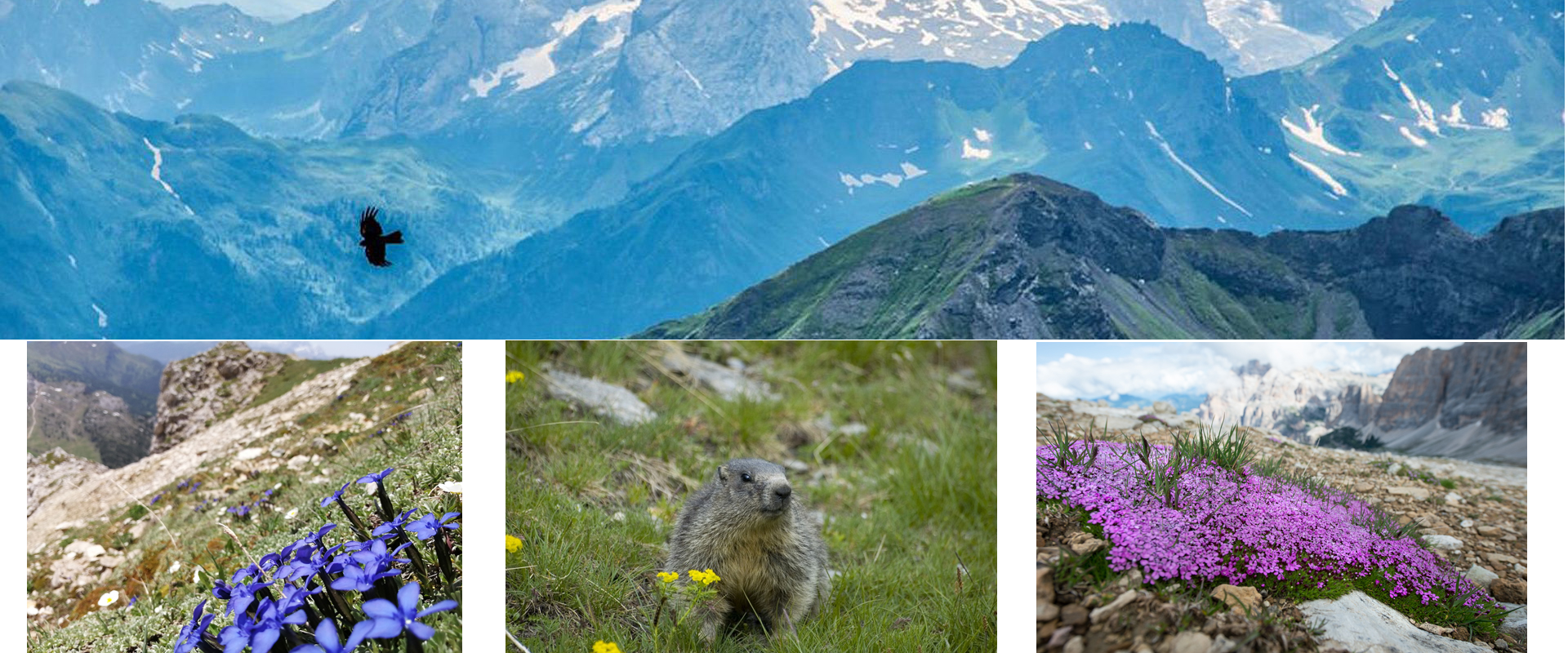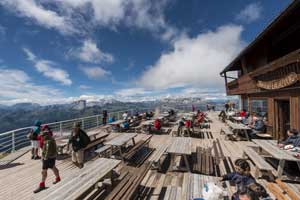Mount Lagazuoi is one of the gateways to the Nature Park of the Ampezzo Dolomites and the Fanes-Senes-Braies Nature Park.
The mountain reaches a height of 2778 meters and thus arises above the tree line.
The traces of the Ice Age are clearly visible on the eroded rock walls and scree slopes, shaped over time.
The geologically most archaic dolomite rocks rise to the surface at Cima Falzarego.
The area offers a surprising biodiversity and abundance of animals and plants, is richer like nowhere else in endemics, rare wild animals and high alpine flowers, which live only in this naturally delimited geographical area.
Fauna and Habitat
At these altitudes (1,500 - 3,000 m) the alpine chamois is undoubtedly the most common ungulate.
Among the smaller mammals, you can meet the cute marmots, who dig complex systems of underground burrows.
Snow hares live in the area of Lake Valparola, further down, deer and roe deer, black grouses and spotted nutcrackers.
There are also many birds at these altitudes, including the Alpine chough, the white ptarmigan, characterised by moulting to white in winter, the wall creeper, a small passerine with elongated beak and fluttering wings, perfectly suited to live and fly on the rocky walls, the buzzard and the noblest bird of prey of the Alpine fauna, the golden eagle.
Learn more >>>
Flora and Vegetation
There are no forest trees on Mount Lagazuoi, as only low and resistant vegetation survives at high altitudes.
Almost unbelievable is the variety of plants which bloom in the most unexpected places, in crevices, on scree slopes, although being snow-covered for most of the year, then whipped by the wind and burned by the sun.
Many plants form coloured, only a few centimetres high cushions.
The gentianella shines so intensely between the rocks as if it reflected the blue of the sky.
Many quite rare species thrive on the ridges of Mount Lagazuoi, among them the endemic Draba dolomitica, the Rhizobotrya alpina and the tiny primrose Androsace haussmanni.
Learn more >>>
Small, charming lakes of glacial origin are a delight for eyes and souls, but especially rare biotypes.


